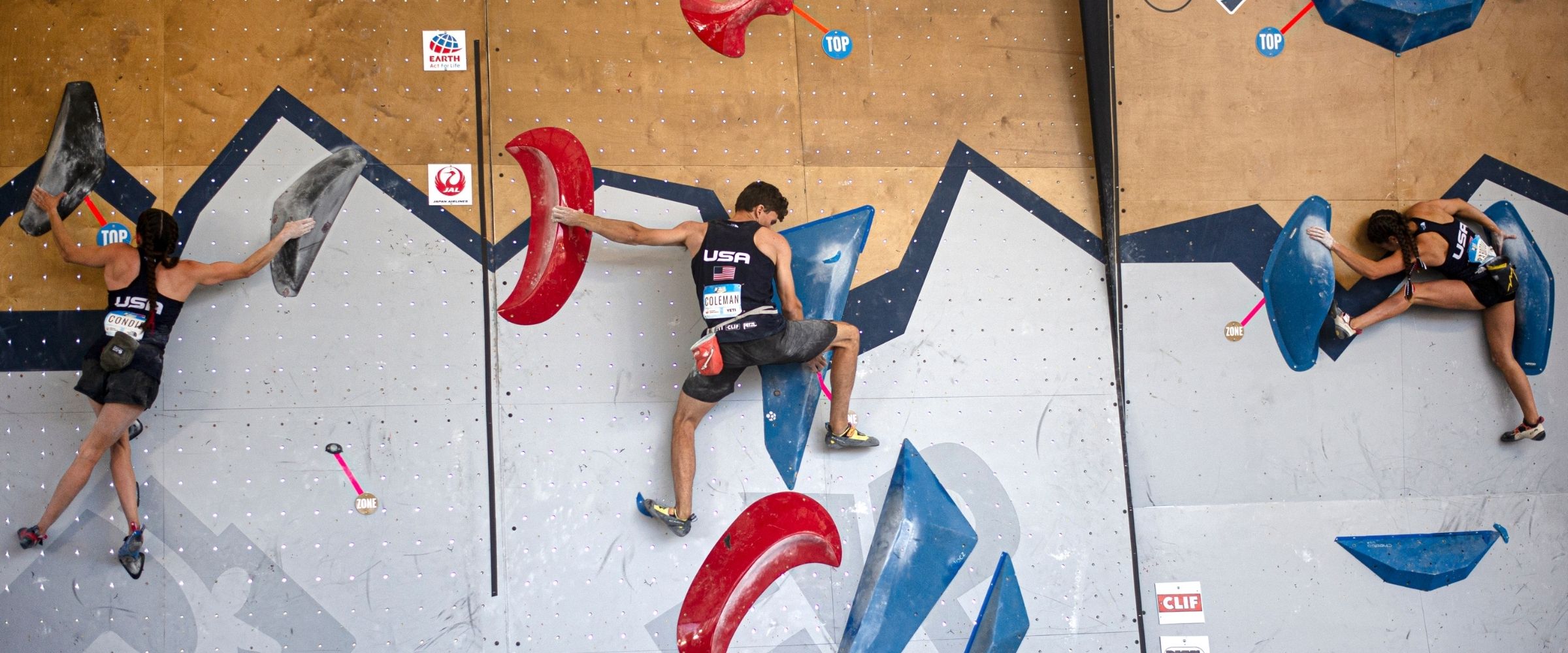Commercial Gyms Need Chief Routesetters
 USA Climbing athletes compete in the IFSC World Cup in Salt Lake City in May 2021.
USA Climbing athletes compete in the IFSC World Cup in Salt Lake City in May 2021.
It’s hard to make someone do something exactly the way you want them to. People like to simplify things, even if in the end they’re making it harder on themselves. At least, that’s what chief routesetter for the International Federation of Sport Climbing, Jamie Cassidy, notices.
"The climbers are always going to pick the most simple and secure method. Even if it's 10 grades harder,” Cassidy says.
We caught up with Cassidy between events at the IFSC World Cup in Salt Lake City in May ahead of the 2020 Tokyo Olympics. He gives insight into routesetting, indoor rock climbing’s future, and why investing in your routesetters is crucial for your members.
Cassidy has been setting since he was twelve. Cassidy was a freelance setter in his native England, bouncing between different gyms until he began bouncing between countries. His natural talent and creativity (“I get geeky about it”) sent him upward through the international ranks. He’s been routesetting World Cups since 2002.
Routesetting for a World Cup and for a commercial gym are vastly different tasks. For competition climbing, “you’re not trying to make a pleasant thing for people to climb on. You're trying to get most of them to fall off.” Even so, his number one thing is fairness.
 |
|
Jamie Cassidy. Photo courtesy of Cassidy. |
Making every route fair is a sticking point for Cassidy. "I can’t tell them how to do it,” he reflects – which is why he tries to set different styles.
“Every style has its place,” he says. He reflected on how interesting it is that in the time he’s been a setter, the desired styles have changed, too. We went from virtually no volumes to lots of them. In competitions, he wants all athletes to be able to try and potentially succeed – and not be inhibited by height or gender. He does concede that climbers can sometimes ‘break’ a problem if they’re tall enough, though.
When setting, he tries to “take the security out of boulders.” In his opinion, it isn’t about it being hard technically – just hard to read.
Commercial climbing gyms need in-house setters, but they also need chief routesetters, argues Cassidy. He draws the analogy of a chief routesetter as a chef, and the climbing wall is the restaurant. As skilled as all the cooks and staff may be, without a chef nothing will turn out great.
“I’m not in charge of where the holds go, I’m in charge of where the holds stay.” Commercial climbing gyms that don’t invest in their routesetting teams by creating a hierarchy are severely missing out. As community-oriented as your gym is, your members are there to climb. If the routesetting is consistently off, they will not stay. Gyms need a routesetting architect, and that’s exactly what a chief routesetter is.
Jamie's Tips for Successful Commercial Routesetting Teams:
- A variety of holds. “If you keep using the same things over and over, they’ll grow stale."
- Give them space for the creative process. It’s the chief routesetter’s job to think in sets, not routes. Allow your team the space for creativity.
- Make their job as efficient as possible. It doesn't have to be easy, but it should be effective. Efficiency can be as simple as keeping things organized or eliminating the need to fix things.
The human aspects of routesetting are what makes the job so unique, so rewarding and so difficult. They can’t make people do things, but they can create a path for climbers to send and achieve. It’s your job to help them make that happen.
P.S: If you're interested in more routesetting tips and tricks, check out some of the latest articles from Hayley Moran, head routesetter at The Crag Nashville.
About the Author
 Jake Byk is the marketing coordinator for the Climbing Wall Association. He's an avid hiker, mountaineer, lover of hard-to-reach places and long drives. He's spent four years as a journalist, then a public lands advocate, documenting the Great Plains and Mountain West before joining the CWA.
Jake Byk is the marketing coordinator for the Climbing Wall Association. He's an avid hiker, mountaineer, lover of hard-to-reach places and long drives. He's spent four years as a journalist, then a public lands advocate, documenting the Great Plains and Mountain West before joining the CWA.
